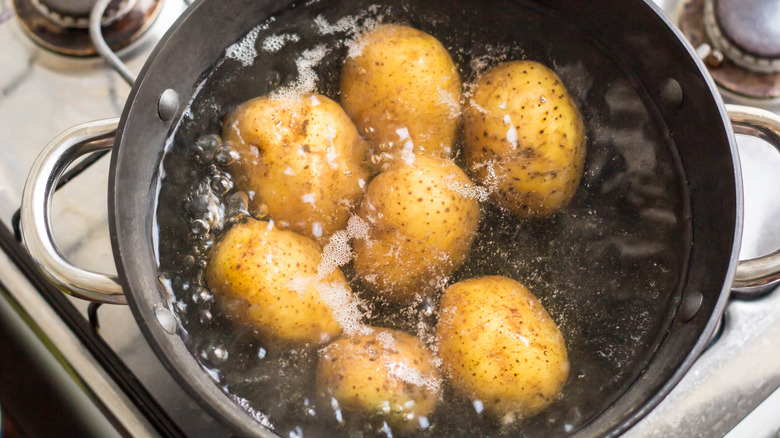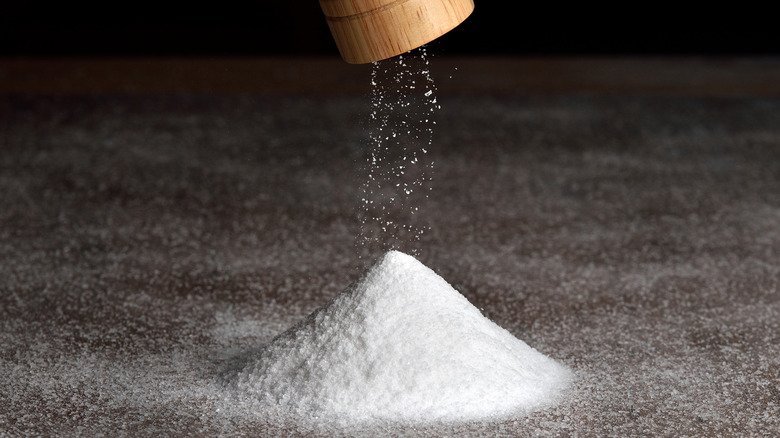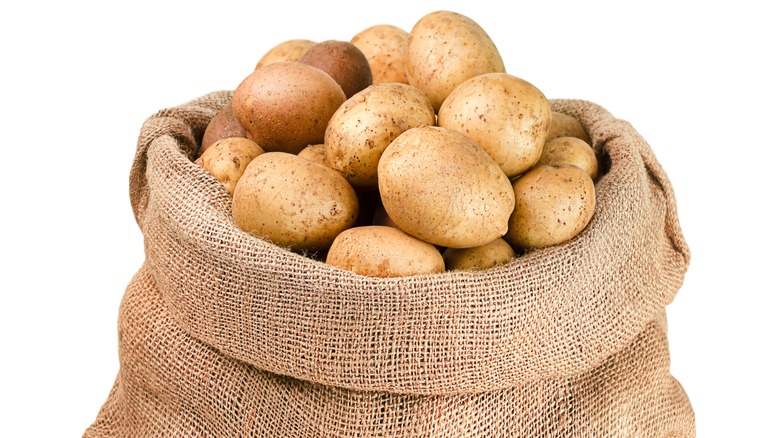What Makes Syracuse Salt Potatoes Unique
Upstate New York has it all. Buffalo boasts beef on weck, Rochester dishes out garbage plates, and, to the east, Syracuse offers salt potatoes.
Yes, the city's claim to fame is a salty version of the classic, basic starch. Salt potatoes may not be the most glamorous of regional foods, but Syracuse has turned them into a cultural and culinary mainstay. And, of course, salt frequently appears alongside potatoes of all forms outside of Syracuse's Onondaga county. Whether you're making mashed potatoes, trying your hand at salt-baked potatoes, or adding a sprinkle of flaky sea salt to an already-baked batch, the seasoning is a tabletop essential.
Yet just like potatoes vary in cooking techniques, salts aren't quite the same either. kosher, table, and sea salts range in taste, granule size, and function. According to The Spruce Eats, Syracuse's salt potatoes use either table or kosher salt. However, salt potatoes first were first made from the salt produced from the area's springs. In particular, the springs located on the south side of Onondaga Lake, per The Onondaga Historical Association. These springs spurred Syracuse's status as a salt-producing state — and contributed to early versions of salt potatoes.
The salt potato has long-standing ties to Syracuse's salt springs
In the 1870s, Onondaga County emerged as the king of salt. According to Edible Finger Lakes, the region was responsible for nearly 90% of the salt in the U. S., thanks to those aforementioned salt springs. Both German and Irish immigrants flocked to Syracuse, and the city was ultimately dubbed "Salt City," as employees started working for the processing plant. There, writes the Onondaga Historical Association, solar evaporation and boiling became main methods of harvesting salt. It was in this environment that the salt potato was born.
According to Atlas Obscura, 19th-century Irish salt workers often brought potato sacks for lunch. Not wanting to waste the heat, while working in Syracuse's salt springs, the workers began to add their potatoes to the roiling brine. And a hot lunch is better than a cold one, so salt potatoes began as part convenience, part necessity, and they have been a beloved regional staple ever since.
Salt potatoes require way more salt than you think
To make your own batch of salt potatoes at home, you will need cups of salt — rather than your standard teaspoon, tablespoon, or pinch. A substantial amount of salt is what will ultimately yield the creamy, savory potatoes you desire. Edible Finger Lakes recommends boiling a pot of water, then adding at least a cup of salt before dropping in your potatoes. Just give your potatoes roughly 20 minutes to cook, and you'll have a batch worthy of the region in no time.
Allrecipes recommends draining the potatoes after cooking, but keeping the batch covered and hot so a salt crust can develop. Once the potatoes are ready for the plate, add a drizzle of melted butter. Serve up your potatoes alongside your main dish and perhaps a beer. There's no need to head to the springs to savor the taste of Syracuse.
Pre-packaged bags of salt potatoes up the convenience factor of this regional staple
Making salt potatoes is not a complicated affair. However, the process can be made all the easier by purchasing ready-to-go bags of Syracuse salt potatoes, which are sold throughout Upstate New York. According to Syracuse Crate, John Hinderwadel started serving salt potatoes at clambakes in the 1900s. As time went on, he packed five-pound bags of potatoes with 12-ounce boxes of salt. Thus birthed the Hinderwadel's brand of salt potatoes — a brand that still sells the beloved food in pounds at a time.
You can buy the mini potatoes at regional grocery stores in New York State; Hinderwadel's distributes to various grocery stores, while other brands of salt potatoes are similarly accessible throughout the region. Simply buy a bag and pop a few potatoes in boiling water. You'll end up with an easy, delicious, and perfectly salted meal.



